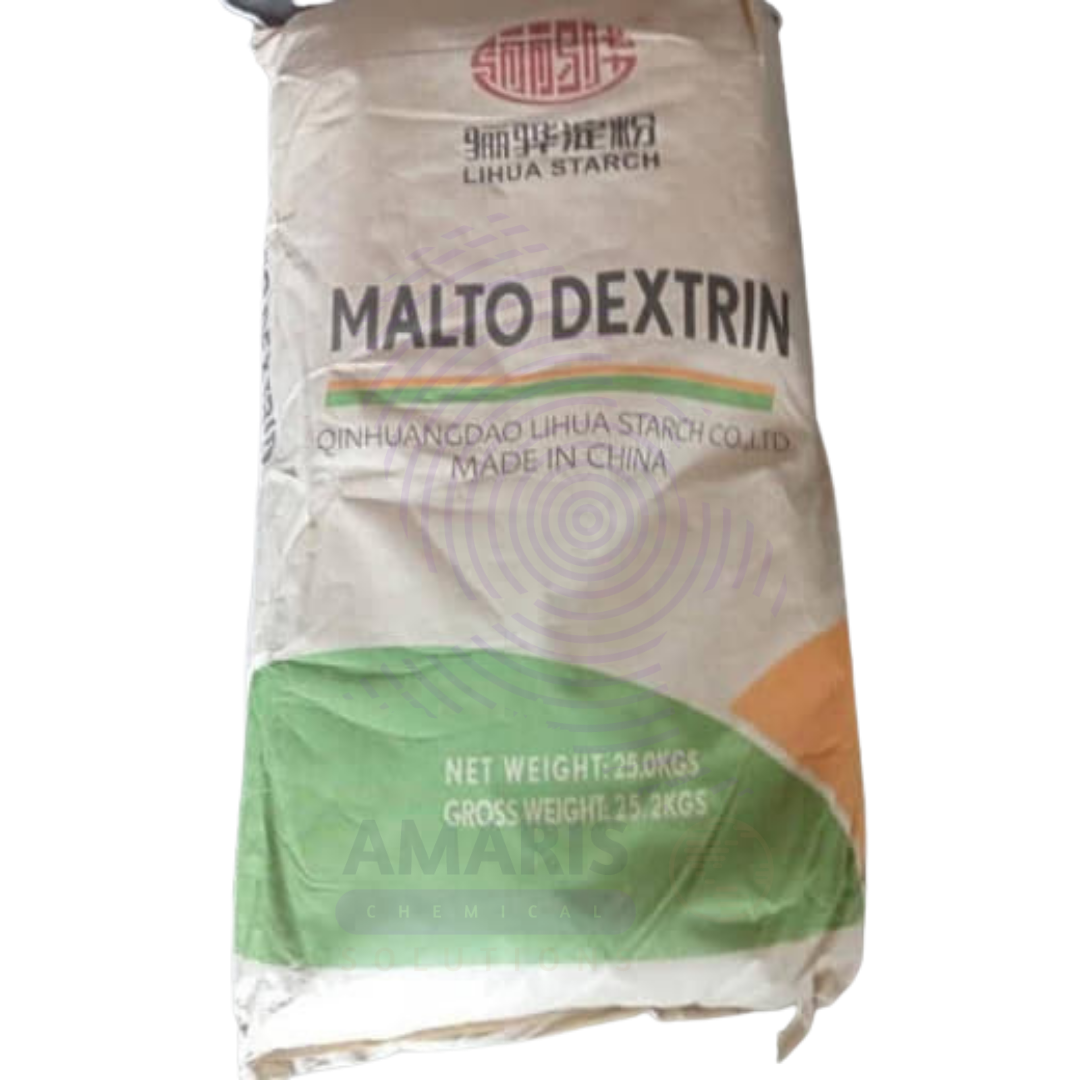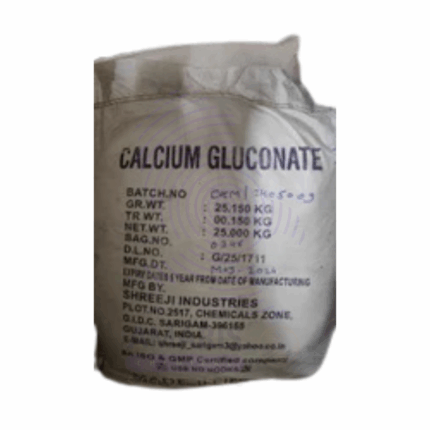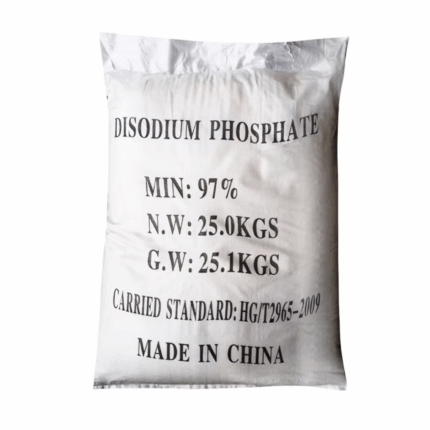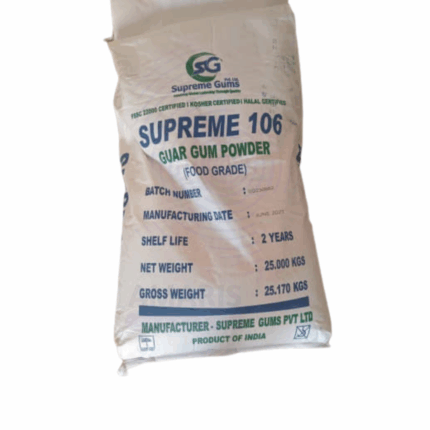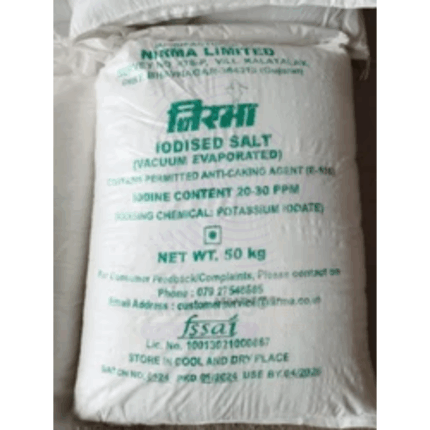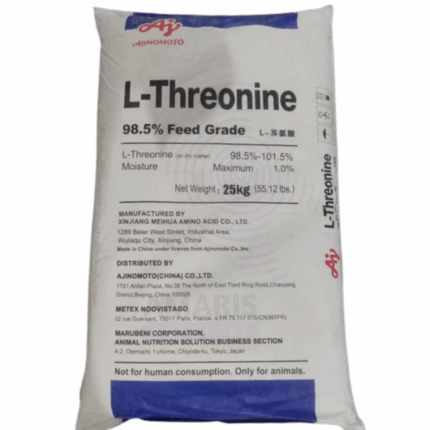“Liquid Glucose” has been added to your cart. View cart
Back to products
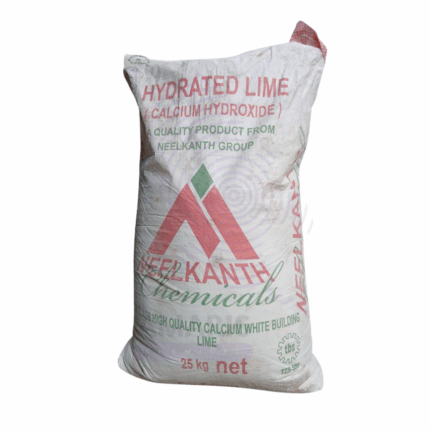

Calcium Hydroxide Hydrated Lime
$ 2.00 Original price was: $ 2.00.$ 1.09Current price is: $ 1.09.
Maltodextrin
$ 2.50 Original price was: $ 2.50.$ 2.32Current price is: $ 2.32.
Whatsapp Order
Maltodextrin is a white, odorless, tasteless polysaccharide produced from partial hydrolysis of starch (typically corn, potato, rice, or wheat starch). It consists of short chains of D-glucose units and is classified by its dextrose equivalent (DE), typically ranging from 3 to 20. Maltodextrin is easily digestible, water-soluble, and has a mildly sweet to nearly neutral flavor depending on its DE value. It is widely used in food, pharmaceutical, and industrial applications as a filler, thickener, bulking agent, and carrier, owing to its excellent functionality and safety.
Categories: Dough Conditioners, Nutrient Supplements
Tags: Bulking agent, Carbohydrate powder, Flavor Enhancer, Food additive, Maltodextrin, Thickener
Description
Table of Contents
Toggle
Maltodextrin
Primary Uses
- Food & Beverage Industry
- Bulking Agent: Used to add volume and texture to low-calorie or sugar-free foods without adding excessive sweetness.
- Carrier for Flavors & Colors: Acts as a carrier or encapsulant for powdered flavors, seasonings, vitamins, and colorants.
- Thickener and Filler: Enhances mouthfeel and consistency in soups, sauces, gravies, salad dressings, and baby foods.
- Energy Source: Commonly used in energy drinks, protein powders, and sports supplements for fast-absorbing carbohydrates.
- Sugar Substitute: Used in confectionery, bakery products, and beverages to replace sugar while maintaining texture and bulk.
- Spray Drying Aid: Helps in producing stable powders by encapsulating liquids during spray drying (e.g., for milk powders or coffee creamers).
- Fermentation Substrate: Used in brewing and fermentation processes as a controlled carbohydrate source.
- Pharmaceutical Industry
- Tablet Binder and Filler: Functions as an excipient in tablet formulations, enhancing compression and stability.
- Carrier for Active Ingredients: Used to deliver active pharmaceutical ingredients (APIs) in powder, capsule, and liquid formulations.
- Stabilizer: Stabilizes suspensions, syrups, and emulsions in over-the-counter drugs and supplements.
- Taste Masking Agent: Helps mask bitter or unpleasant tastes of certain medications.
- Nutraceuticals & Dietary Supplements
- Caloric Supplement: Incorporated in high-calorie and weight-gain supplements.
- Prebiotic Support: Low-DE maltodextrins may provide minimal prebiotic benefits for gut health.
- Powdered Supplements: Acts as a carrier or bulking agent for powdered vitamins, proteins, and minerals.
Secondary Uses
- Cosmetics & Personal Care
- Stabilizer and Filler: Used in creams, lotions, and face powders for bulking and thickening.
- Natural Binder: Added to skincare products for enhanced texture and to bind natural ingredients in formulations.
- Encapsulation Agent: Used to encapsulate botanical extracts or essential oils in powder form.
- Industrial Applications
- Adhesives & Paper Industry: Employed in water-based adhesives and paper sizing agents for improved bonding.
- Textile Printing: Used as a thickening agent in some textile printing pastes.
- Biodegradable Plastics: Occasionally used as a starch-derived additive in bioplastic formulations.
- Agricultural Applications
- Carrier for Agrochemicals: Used to carry and evenly disperse micronutrients or pesticide formulations in powder form.
- Animal Feed: Included as a carbohydrate source and binder in feed pellets and supplements.
PRODUCT KEY FEATURES
- Basic Identification Attributes
- Chemical Name (IUPAC): (C6H10O5)n
- Common/Trade Name: Maltodextrin
- CAS Number: 9050-36-6
- HS Code: 1702.90.50
- Synonyms: Hydrolyzed starch; Soluble starch; Starch hydrolysate; DE powder; Spray-dried maltodextrin
- Physical & Chemical Properties
- Physical State: Fine, free-flowing powder
- Color & Odor: White to off-white; odorless
- Taste: Slightly sweet to bland depending on DE value
- Solubility: Completely soluble in water
- Dextrose Equivalent (DE): Typically 5–20
- pH (1% solution): 4.0 – 7.0
- Moisture Content: <6%
- Bulk Density: ~0.5 – 0.8 g/cm³
- Calorific Value: ~4 kcal/g
- Safety & Hazard Attributes
- GHS Classification: Not classified as hazardous
- Toxicity: Non-toxic; generally recognized as safe (GRAS)
- Exposure Limits: No specific occupational limits; low risk under normal handling
- Allergenicity: Gluten-free if derived from corn or rice; wheat-derived forms may contain gluten unless labeled gluten-free
- Storage & Handling Attributes
- Storage Conditions: Store in a cool, dry place, protected from moisture and pests
- Container Type: Food-grade polyethylene-lined kraft paper bags or fiber drums
- Shelf Life: 18–24 months under recommended conditions
- Handling Precautions: Avoid inhalation of dust; use protective gear during bulk handling
- Regulatory & Compliance Attributes
- Food Grade Approval: GRAS (FDA); E1400 (EU food additive)
- Pharmaceutical Grade: Conforms to FCC, USP, and EP monographs
- Labeling Requirements: Must indicate source for allergen disclosure (e.g., wheat-derived)
- Kosher/Halal Certification: Available upon request
- REACH & CLP: Not classified under hazardous substances
- Environmental & Health Impact
- Biodegradability: Readily biodegradable
- Ecotoxicity: Low risk to aquatic and terrestrial environments
- Bioaccumulation: Not bioaccumulative
- Carcinogenicity/Mutagenicity: Not classified; considered safe for intended uses
SAFETY HANDLING PRECAUTIONS
- Safety Handling Precautions
- PPE Required: Dust mask, gloves, and goggles for large-scale industrial handling
- Handling Guidelines: Minimize dust generation; avoid static discharge in dry environments
- Storage Measures: Keep container sealed when not in use; protect from humidity
- First Aid Measures
- Inhalation: Move to fresh air; seek medical help if discomfort persists
- Skin Contact: Wash with soap and water if irritation occurs
- Eye Contact: Rinse with water for several minutes; consult physician if irritation persists
- Ingestion: Safe for consumption in food-grade quantities; no adverse effects expected
- Firefighting Measures
- Fire Hazards: Combustible dust hazard in powdered form in high concentrations
- Extinguishing Media: Use dry chemical, CO₂, or water spray
- Special Precautions: Avoid dust cloud formation; remove ignition sources
- Hazardous Combustion Products: CO₂, CO, and minor organic volatiles under fire
Related products
Disodium Hydrogen Phosphate Dihydrate (Na₂HPO₄·2H₂O)
Disodium Hydrogen Phosphate Dihydrate is the hydrated form of disodium hydrogen phosphate, a white crystalline powder commonly used as a buffering agent, emulsifier, and sequestrant. The dihydrate form contains two water molecules per formula unit, which affects its physical properties such as melting point and solubility. It is widely applied in food, pharmaceutical, water treatment, and industrial processes to maintain pH stability, improve texture, and supply essential sodium and phosphate ions.
Disodium Phosphate
Disodium Phosphate, also known as sodium phosphate dibasic, is an inorganic compound widely used for its buffering, emulsifying, and chelating properties. It commonly appears as a white, odorless crystalline powder or granules that are highly soluble in water and alkaline in nature. Disodium Phosphate plays a vital role in regulating pH, improving stability in formulations, and providing essential sodium and phosphate ions. It finds extensive use across food processing, pharmaceuticals, water treatment, agriculture, and industrial applications.
Ellagic Acid
Ellagic Acid is a naturally occurring polyphenolic compound found in numerous fruits, nuts, and vegetables such as pomegranates, strawberries, raspberries, walnuts, and cranberries. It is a potent antioxidant known for its ability to scavenge free radicals and chelate metal ions. Due to its significant anti-inflammatory, anti-carcinogenic, and anti-viral properties, Ellagic Acid has gained extensive interest in pharmaceutical, nutraceutical, cosmetic, and food industries. It appears as a yellow to light brown crystalline powder, insoluble in water but soluble in organic solvents like ethanol and DMSO.
Flax
Flax (Linum usitatissimum) is an ancient crop cultivated primarily for its seeds and fibers. The flax seeds are small, flat, and oval, ranging from golden yellow to brown in color, and are rich in nutrients including omega-3 fatty acids (alpha-linolenic acid), lignans, dietary fiber, proteins, and vitamins. Flax fibers are derived from the stem and used in textile and industrial applications. Flaxseed oil, extracted from the seeds, is highly valued for its nutritional and therapeutic properties. Flax is utilized across food, nutraceutical, cosmetic, pharmaceutical, and industrial sectors due to its multifunctional health benefits, fiber content, and sustainable nature.
Guar Gum
Guar Gum is a natural polysaccharide extracted from the endosperm of the guar bean (Cyamopsis tetragonoloba). It appears as an off-white to cream-colored powder with a neutral odor and bland taste. Guar Gum is a galactomannan composed mainly of mannose and galactose units, known for its excellent water-binding, thickening, and stabilizing properties. It forms highly viscous solutions even at low concentrations, making it a versatile hydrocolloid used widely across food, pharmaceutical, cosmetic, oilfield, and industrial applications.
Iodised Salt
Iodised Salt is table salt (sodium chloride) fortified with a small, controlled amount of iodine, typically in the form of potassium iodate or potassium iodide. It appears as fine white crystalline granules, odorless, and with a characteristic salty taste. The addition of iodine helps prevent iodine deficiency disorders (IDD) such as goiter, mental impairment, and developmental abnormalities. Iodised Salt is widely used in households, food processing, and animal nutrition to ensure adequate dietary iodine intake.
L-Threonine Feed Grade
L-Threonine Feed Grade is a high-purity essential amino acid used primarily as a nutritional supplement in animal feed. It appears as a white crystalline powder and is vital for protein synthesis, growth, and overall health in livestock. This feed-grade form of L-Threonine helps balance amino acid profiles in animal diets, especially in monogastric animals like poultry and swine, improving feed efficiency and production performance.
Potassium Citrate
Potassium Citrate is a potassium salt of citric acid, appearing as a white, crystalline, water-soluble powder. It is widely used in food, pharmaceutical, agricultural, and industrial applications due to its buffering, alkalizing, and sequestrant properties. Potassium Citrate helps regulate acidity and provides potassium ions critical for various biochemical and physiological functions.


 Preservatives(food)
Preservatives(food) Flavor Enhancers
Flavor Enhancers Acidulants
Acidulants Sweeteners
Sweeteners Antioxidants
Antioxidants Colorants(food)
Colorants(food) Nutraceutical Ingredients (food)
Nutraceutical Ingredients (food) Nutrient Supplements
Nutrient Supplements Emulsifiers
Emulsifiers
 Collectors
Collectors Dust Suppressants
Dust Suppressants Explosives and Blasting Agents
Explosives and Blasting Agents Flocculants and Coagulants
Flocculants and Coagulants Frothers
Frothers Leaching Agents
Leaching Agents pH Modifiers
pH Modifiers Precious Metal Extraction Agents
Precious Metal Extraction Agents
 Antioxidants(plastic)
Antioxidants(plastic) Colorants (Pigments, Dyes)
Colorants (Pigments, Dyes) Fillers and Reinforcements
Fillers and Reinforcements Flame Retardants
Flame Retardants Monomers
Monomers Plasticizers
Plasticizers Polymerization Initiators
Polymerization Initiators Stabilizers (UV, Heat)
Stabilizers (UV, Heat)
 Antifoaming Agents
Antifoaming Agents Chelating Agents
Chelating Agents Coagulants and Flocculants
Coagulants and Flocculants Corrosion Inhibitors
Corrosion Inhibitors Disinfectants and Biocides
Disinfectants and Biocides Oxidizing Agents
Oxidizing Agents pH Adjusters
pH Adjusters Scale Inhibitors( water)
Scale Inhibitors( water)
 Antioxidants(cosmetic)
Antioxidants(cosmetic) Emollients
Emollients Fragrances and Essential Oils
Fragrances and Essential Oils Humectants
Humectants Preservatives
Preservatives Surfactants(cosmetic)
Surfactants(cosmetic) Thickeners
Thickeners UV Filters
UV Filters
 Fertilizers
Fertilizers Soil Conditioners
Soil Conditioners Plant Growth Regulators
Plant Growth Regulators Animal Feed Additives
Animal Feed Additives Biostimulants
Biostimulants Pesticides (Herbicides, Insecticides, Fungicides)
Pesticides (Herbicides, Insecticides, Fungicides)
 Active Pharmaceutical Ingredients (APIs)
Active Pharmaceutical Ingredients (APIs) Excipients
Excipients Solvents(pharmaceutical)
Solvents(pharmaceutical) Antibiotics
Antibiotics Antiseptics and Disinfectants
Antiseptics and Disinfectants Vaccine Adjuvants
Vaccine Adjuvants Nutraceutical Ingredients (pharmaceutical)
Nutraceutical Ingredients (pharmaceutical) Analgesics & Antipyretics
Analgesics & Antipyretics
 Analytical Reagents
Analytical Reagents Solvents(lab)
Solvents(lab) Chromatography Chemicals
Chromatography Chemicals Spectroscopy Reagents
Spectroscopy Reagents microbiology-and-cell-culture-reagents
microbiology-and-cell-culture-reagents Molecular Biology Reagents
Molecular Biology Reagents Biochemical Reagents
Biochemical Reagents Inorganic and Organic Standards
Inorganic and Organic Standards Laboratory Safety Chemicals
Laboratory Safety Chemicals Specialty Laboratory Chemicals(Special Laboratory Equipment)
Specialty Laboratory Chemicals(Special Laboratory Equipment)
 Demulsifiers
Demulsifiers Hydraulic Fracturing Fluids
Hydraulic Fracturing Fluids Scale Inhibitors(oil)
Scale Inhibitors(oil) Surfactants(oil)
Surfactants(oil) Drilling Fluids
Drilling Fluids
 Dyes and Pigments
Dyes and Pigments Bleaching Agents
Bleaching Agents Softening Agents
Softening Agents Finishing Agents
Finishing Agents Antistatic Agents
Antistatic Agents
 Admixtures
Admixtures Waterproofing Agents
Waterproofing Agents Sealants and Adhesives
Sealants and Adhesives Curing Compounds
Curing Compounds Concrete Repair Chemicals
Concrete Repair Chemicals Anti-Corrosion Coatings
Anti-Corrosion Coatings
 Surfactants(cleaning)
Surfactants(cleaning) Builders
Builders Enzymes
Enzymes Solvents (Cleaning)
Solvents (Cleaning) Fragrances
Fragrances
 Electronic Chemicals
Electronic Chemicals Catalysts
Catalysts Lubricants
Lubricants Photographic Chemicals
Photographic Chemicals Refrigerants
Refrigerants Automotive chemicals
Automotive chemicals Pyrotechnic Chemicals
Pyrotechnic Chemicals
 Biodegradable Surfactants
Biodegradable Surfactants Bio-based Solvents
Bio-based Solvents Renewable Polymers
Renewable Polymers Carbon Capture Chemicals
Carbon Capture Chemicals Wastewater Treatment Chemicals
Wastewater Treatment Chemicals
 Pigments
Pigments Solvents(paint)
Solvents(paint) Specialty Coatings
Specialty Coatings Binders/Resins
Binders/Resins Additives
Additives Driers
Driers Anti-Corrosion Agents
Anti-Corrosion Agents Functional Coatings
Functional Coatings Application-Specific Coatings
Application-Specific Coatings
 Fresh Herbs
Fresh Herbs Ground Spices
Ground Spices Whole Spices
Whole Spices Spice Blends
Spice Blends Dried Herbs
Dried Herbs
 Leavening Agents
Leavening Agents Dough Conditioners
Dough Conditioners Flour Treatments
Flour Treatments Fat Replacers
Fat Replacers Decoratives
Decoratives Preservatives(baking)
Preservatives(baking)
 Plasticizers & Softeners
Plasticizers & Softeners Reinforcing Agents
Reinforcing Agents Adhesion Promoters
Adhesion Promoters Vulcanizing Agents
Vulcanizing Agents Antidegradants
Antidegradants Blowing Agents
Blowing Agents Fillers & Extenders
Fillers & Extenders Accelerators & Retarders
Accelerators & Retarders